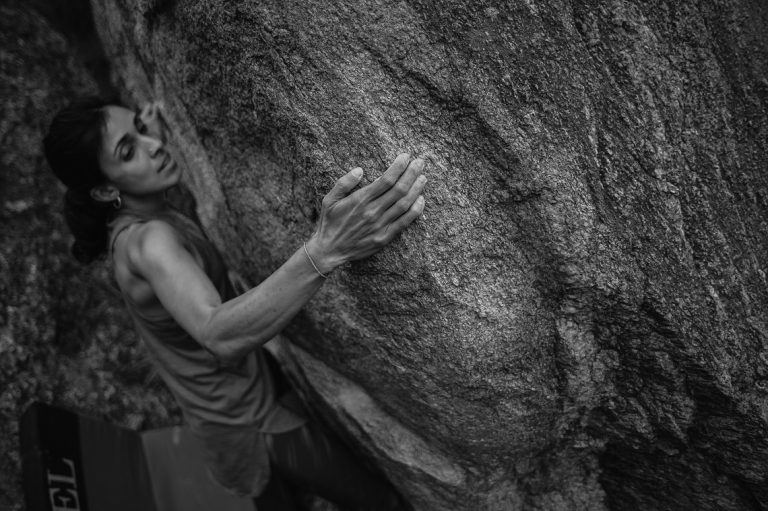In a country where climbing is deemed UNSUITABLE for women, Indian female athletes must FIGHT twice as hard to overcome the obstacles set before them. Meet three EXCEPTIONAL climbers who are breaking records and SMASHING boundaries on their home turf
For all its faults, 2020 was a year of unprecedented success for female climbers. As the year drew to a close, women from around the world started a revolution. With numerous 5.15 records, a grade that’s defined as ‘Very Difficult; strenuous climbing that’s technical and vertical, may have overhangs with small holds, for expert climbers who train regularly and have lots of natural ability’, women have carved a path of equal opportunities.
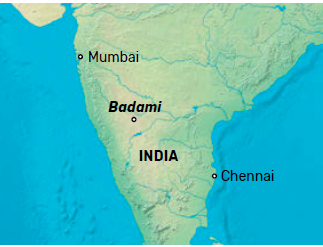 Furthermore, India has raised the bar of climbing with two more female 8a ascents in 2020. This achievement came when Prateeksha Arun climbed Samsara, a classic 8a line in Badami, on 22 January. Gowri Varanashi echoed the feat on 28 December, ending the year with tremendous success. Siddhi Manerikar completed Samsara (8a) on 17 November 2018, becoming the first Indian woman to climb it.
Furthermore, India has raised the bar of climbing with two more female 8a ascents in 2020. This achievement came when Prateeksha Arun climbed Samsara, a classic 8a line in Badami, on 22 January. Gowri Varanashi echoed the feat on 28 December, ending the year with tremendous success. Siddhi Manerikar completed Samsara (8a) on 17 November 2018, becoming the first Indian woman to climb it.
Not much is documented in Indian climbing, but in 2004, Vathsala MN from Bangalore was reportedly the first woman to climb Toilet Rock, another grade 8a route. Why did it take so long for the next wave of female climbers to break the 5.13 barrier, I wonder?
THE SAMSARA
Buddhists believe in a cycle of death and rebirth called samsara. Through karma and eventual enlightenment, they hope to escape samsara and achieve nirvana, an end to suffering
Not much is documented about Badami, therefore the history of the Samsara* route is not known. The route itself is a 15m intricate line considered a long endurance climb. The crux is the start section with technical moves; the real killer is right at the top anchor with forearms on the verge of giving up.
“Samsara is not so hard, anybody with endurance can climb it,” is the usual justification to shun away the victorious moments of these women who vanquish it. We tend to overlook the struggles they go through every day. It is time we not only appreciate their accomplishment but also the endeavours they undertook to climb this hard. “We are conditioned to believe that these physically intensive sports are not for us. We women stop ourselves from exploring. Many beginners come to me saying I don’t think I can do this move, I don’t have the body for it,” states Gowri. “We are accustomed to seeing muscular athletes in sports and this nurtures the concept of a suitable body type for climbing.”
Siddhi, who entered the sport as a 13-year-old in 2009, has been in the public eye for more than a decade. She was instantly hooked on climbing from the outset and began grooming her skillset with Coach Rahul Pendse. She was more attracted to Competition Climbing rather than outdoors. Since then, she has won numerous national medals and sponsorship. “I never bought equipment, I always won gear through competition rewards or brand support,” she smiles proudly. “I did not want to put my Dad through the financial burden.” Coming from a strict, traditional Mumbaikar family, her Dad was a little resistant at the beginning but later recognised her talent.
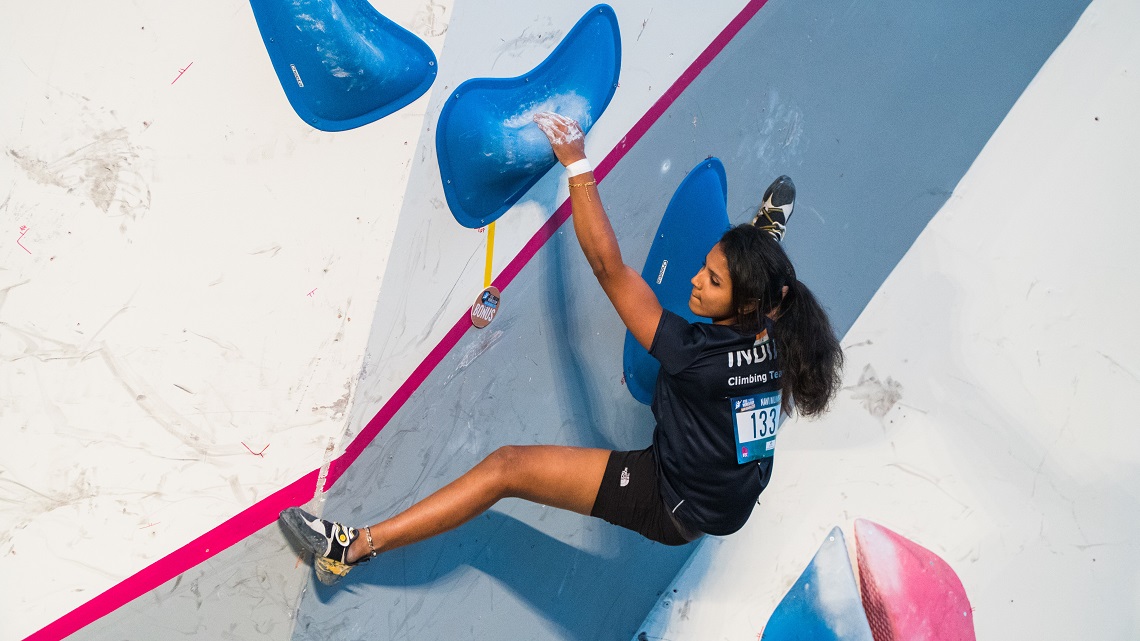
Over the years her body has changed drastically. “I began climbing as a kid. Naturally, my body matured as I stepped into my 20s. I no longer had the thigh gap. With weight training, my arms blew up even more.” Siddhi remarks that athletes are assumed to fit a certain body type. She feels she’s frequently judged more on her appearance than her ability, encountering comments from shameless people while she is on the route such as, “She will fall with so much weight. She won’t be able to pull herself up.”
Around 2018, the mental trauma of this kind of abuse began to affect her performance in competitions. “Initially I couldn’t handle it. I know I am exercising regularly but my body is designed like that. No matter what workout I did my legs won’t shrink, I gained more muscle instead.”
Siddhi was frustrated with her poor competition ranking and decided to head to Badami to gain more strength. “During that trip, I finished Samsara in four days. I guess I did have the strength to pull up my heavy body. My training for competitions was not wrong after all. It was a big slap to people who body-shamed me,” Siddhi continues. Ticking off Samsara has made her body confident. “If I am capable in my climbing form, why do I have to look a certain way? I am under a constant body-shaming lens. With time, I have accepted my shape and now I am happy about it.”
BODY TALK
While physique is essential for climbing, strength-wise women are still considered weak. Prateeksha has been competing in the Sports Climbing championships for 10 years. She learned about climbing from her father who was a climber himself, in the 90s. She eventually chose climbing over gymnastics and has since followed her own path.
She says that women are treated as fragile and weak in climbing competitions. She reveals, “Women are given routes of sub-junior boys category. The authorities don’t consider us strong. They don’t use international standard routes for us. If you’re upping the level for the men while giving us women old-style routes, we will continue to be weaker. I understand, there are only a handful of female competitors and we might not be able to top every climb, but we at least deserve an equal chance.”
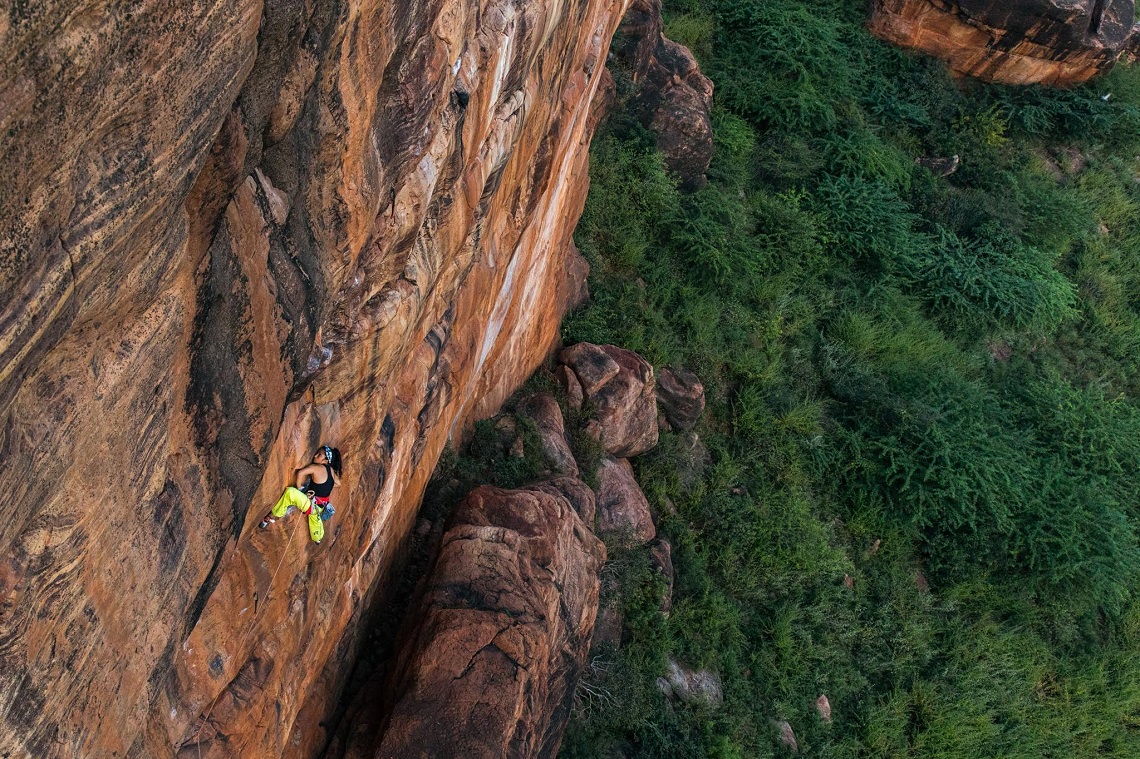
Despite the cynicism in competition, Prateeksha is driven to win international medals. She has been the National Lead Champion for four years. “She is a different kind of character. She won’t quit until she has achieved her goal,” says Shivalinga M, her climbing coach. “She approached Samsara with the same attitude. After every failed attempt she would come down crying. But she never gave up and kept on trying.”
A sense of guilt develops in women if they don’t follow the norms. “I am still ashamed to climb in a sports bra,” admits Gowri. “I know I shouldn’t be, but somehow, growing up, we are subconsciously groomed to dress and behave traditionally.” These prejudices against women are still very real within society, too. She narrates a horrifying incident during a women’s climbing festival where she and her fellow competitors were openly victimised for just being female.
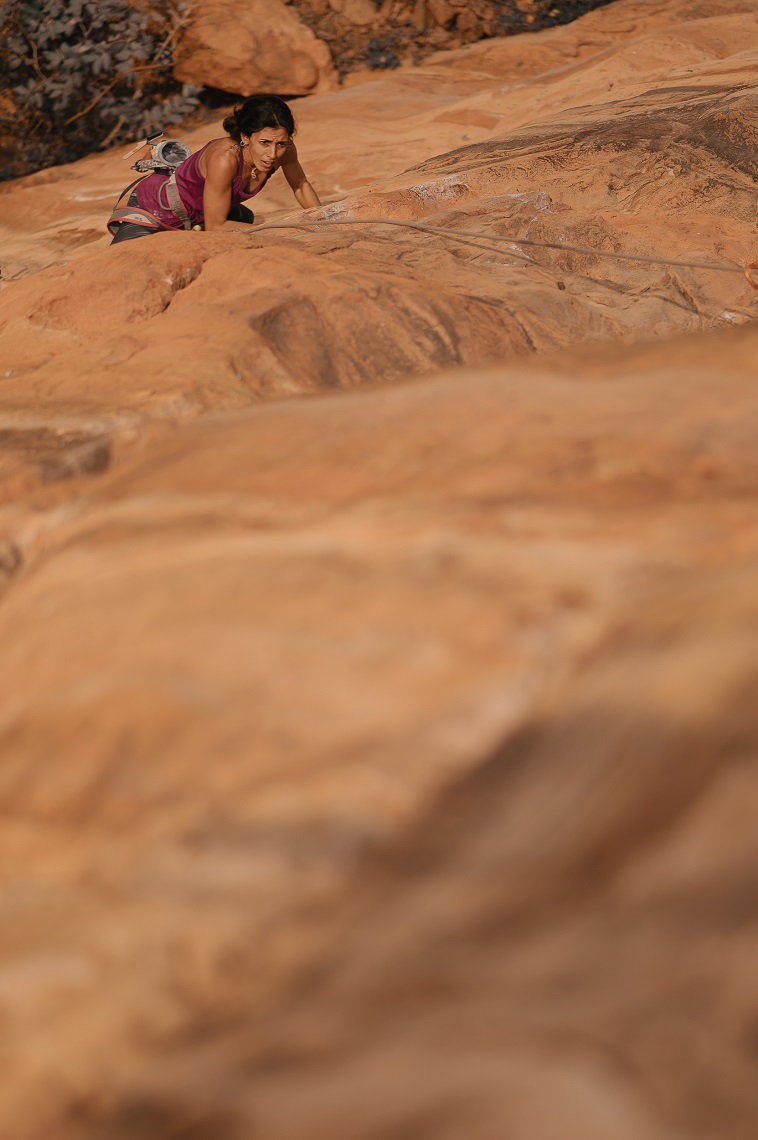
“We were about 35 women and we were swimming in a lake in Hampi. From nowhere some 20 men showed up and they kept staring at us. Every single woman there could feel negative vibes from those boys. So we had to leave. Apparently, ladies cannot swim openly. We were made to feel apologetic and uncomfortable for being outdoors.”
In another episode, Gowri recounts how other women are sometimes just as bad as their male counterparts in the adventure field. “I was bouldering in Turahalli near Bangalore with my male friends, I was the only girl. Then two lady forest officers came and asked us to leave immediately. I remember their exact words were, ‘if it had been only you boys, it would be fine, but she shouldn’t be here. Don’t you hear all the rape stories?’ I was shocked.”
LIKE A GIRL
Time and again women are reminded about their boundaries and vulnerabilities. “My relatives always barb about me getting married. They tell my parents that I am a girl and shouldn’t be practising late at night and that I should get married and settle down,” Siddhi sighs. “But I am lucky my parents are open-minded and they ignore such people.”
“Many girls give up their dreams due to societal pressure, family demands, or after marriage. Therefore, extra effort is needed to pull more women into climbing,” Gowri says. To help with this, she has started Climb Like a Woman (CLAW) an initiative to teach women basic climbing techniques and empower them so that they hold on to the sport.
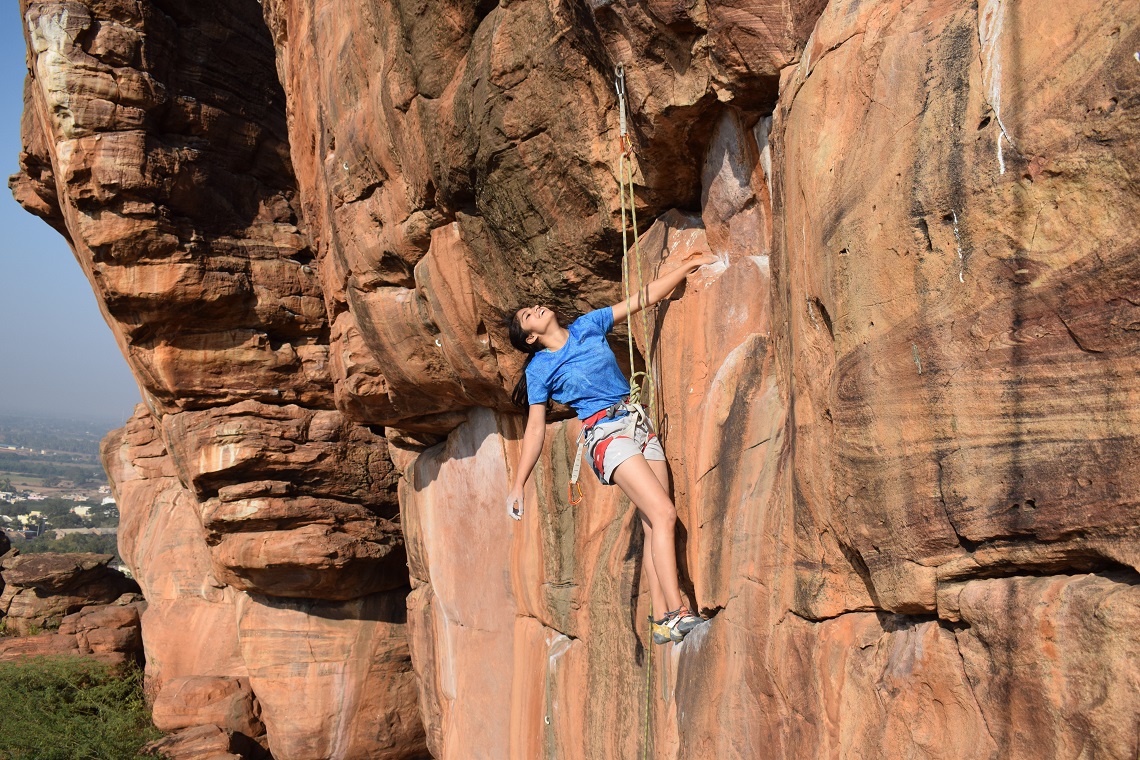
Gowri herself started climbing at 22. An avid fan of the outdoors since childhood, she volunteered with wilderness programmes and NGO wildlife projects, from an early age. With her immense experience, she began working in the Amazon forest in Peru as a guide. She is passionate about wildlife and photography and can often be found shooting pictures of snakes. A friend saw Gowri’s potential as a rock climber and suggested she give it a go. Juggling work, Gowri found opportunity to climb in both the USA and India, slowly pushing herself to take on harder climbs and setting new goals for herself.
Breaking the age barrier, Gowri has set an example that age is just a number when it comes to tackling a 5.13. “I discovered climbing quite late. I’m 29 now; I was curious to see if I could ascend an 8a before I turn 30. Some limitations come with age, but I’ve become a better climber with experience.” With constant travelling, she is successfully managing wilderness jobs, multiple social initiatives, and conservation projects while pursuing her personal goals.
“Gowri is the crimp queen. Her only weakness was fall fear,” says Shivalinga, who also trained Gowri for Samsara. “As a part of her training, she took around 30 different types of falls on lead walls. She is aware of the age factor and will never overtrain, to avoid injury. She is pushing her limits but being smart about it.”
MULTITASKING
These women fight with tenacity to overcome the hurdles placed before them from the outside. However, they are also struggling to balance schooling, work, family, and their feelings of duty. Prateeksha is in the final year of an architectural degree. “I’m required to do an internship for my degree, but all the architecture firms are notorious for having irregular work hours for interns. They grind us with work. I’m used to it now, though, because, throughout school and college, I’ve had to juggle studying and climbing.”
After setting her heart on Samsara in January 2019 and not succeeding, Prateeksha couldn’t try again until the start of 2020. “Immediately after Badami, I was preparing for the Nationals. Then I had a shoulder injury, so I had to take three months break from training.” However, the endurance she built through managing her studies alongside her training served her well on Samsara.
“My college hours would be 9-5 so I’d go train from 5:30-7 in the morning. Then from college, I’d go to the gym in the evening by 6, practise till 8, and then go back home. I’d sit up at night doing college assignments until 12 or 1 am and then wake up again at 4:30 to start the new day. I couldn’t afford to score less in exams but I couldn’t leave climbing either. The past four years have been the hardest years of my life; climbing keeps me going.”
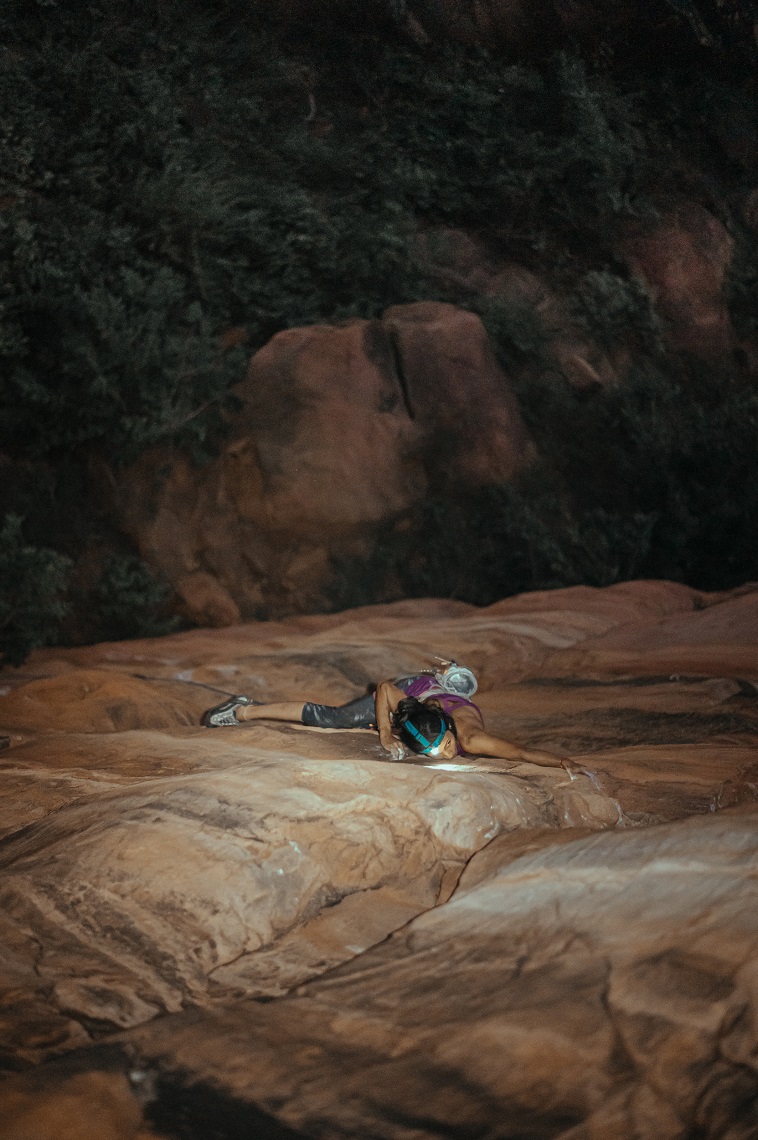
On the other end, Siddhi has graduated and is now ready to face the challenge of managing work and her climbing projects. “I lost my father in the pandemic in September. I’m still dealing with the grief. Being the eldest daughter, it’s my responsibility to earn bread and butter in the house. I’m constantly torn between thoughts of finding a high-paying desk job or sticking to the climbing and fitness industry. Life is overwhelming right now. But I will not quit climbing for sure.” It is this resilience that’s made her one of India’s top female climbers.
On asking what her reaction was after clipping the top anchors of Samsara, Gowri tears up, “I cried and cried. It felt like a huge weight off my chest. Honestly, I had been facing many problems before climbing the line. Covid, lockdown, family issues, a knee injury in a bike accident…. I wasn’t able to train for weeks before heading to Badami. Yet, I somehow completed the climb. It was the best way 2020 could end for me. It has reinstated faith in me to try harder.”
Facing the samsara of life and through climbing, these women have shown a new paradigm of femininity. Slowly but surely, they have put India on the map of elite climbing levels for women. Whatever the samsara of suffering is, or however huge it is, these athletes are proving that with true determination, anything is possible.
WHO’S WRITING?
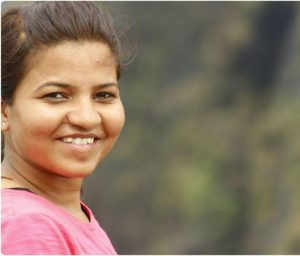 Nutan Shinde-Pawar is a climber, writer, and hiker from India. She has written for various outdoor/climbing companies like UKClimbing, Rock and Ice, Gearjunkie, ExplorersWeb, Mojagear, Dreamwanderlust, and many more. Coming from a conservative family and facing the real samsara herself, she strives to bring out stories of inspiring Indian athletes in the adventure field. Follow Nutan on Instagram @nutaneer
Nutan Shinde-Pawar is a climber, writer, and hiker from India. She has written for various outdoor/climbing companies like UKClimbing, Rock and Ice, Gearjunkie, ExplorersWeb, Mojagear, Dreamwanderlust, and many more. Coming from a conservative family and facing the real samsara herself, she strives to bring out stories of inspiring Indian athletes in the adventure field. Follow Nutan on Instagram @nutaneer



